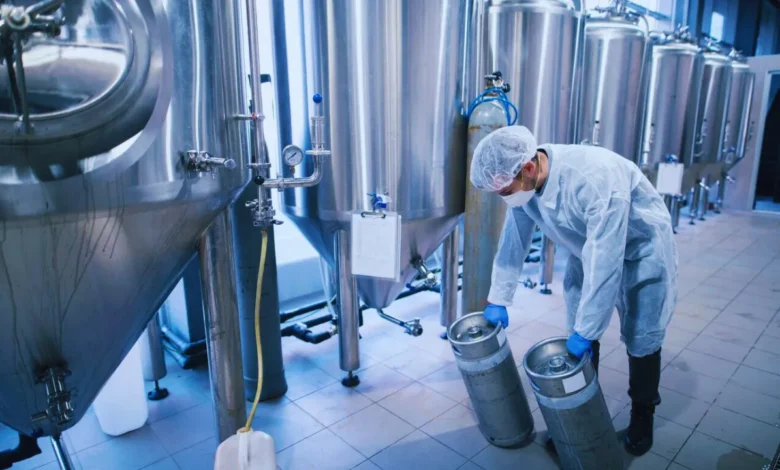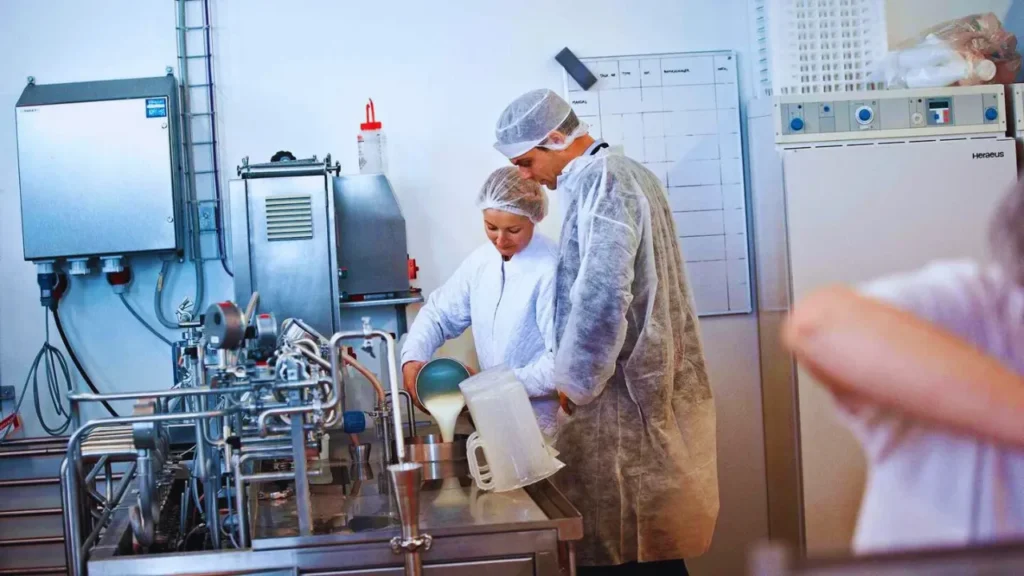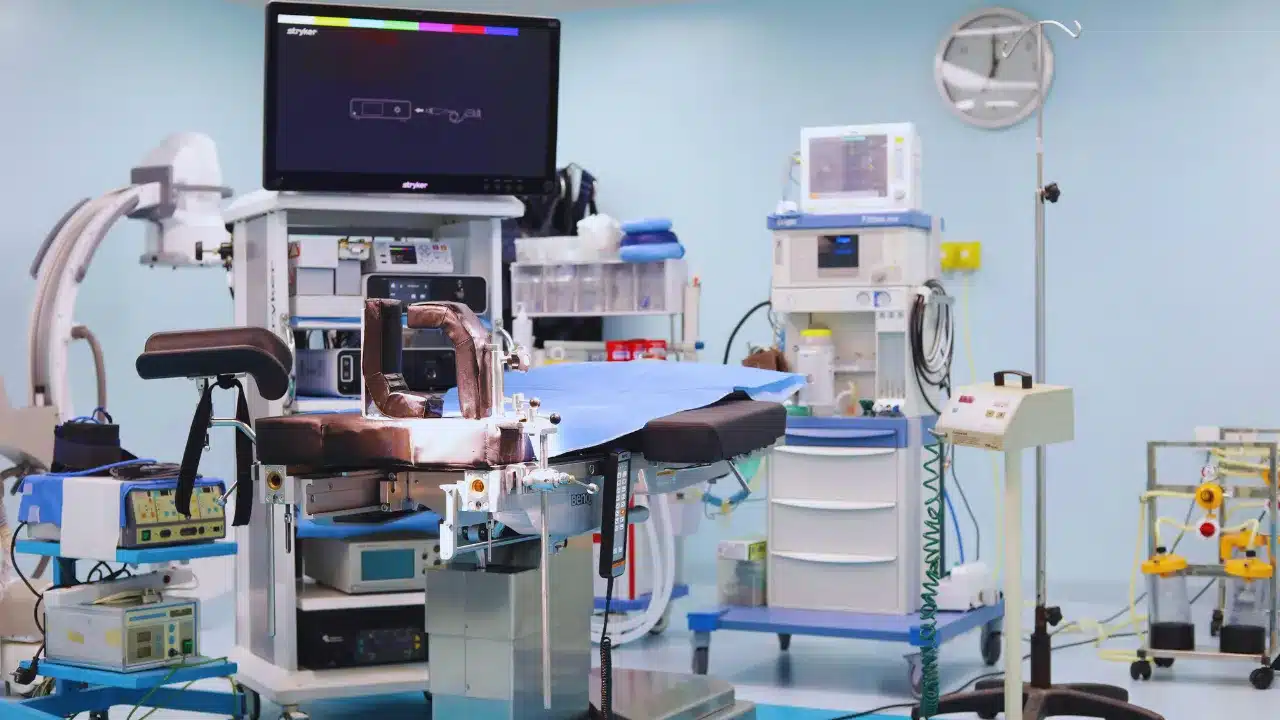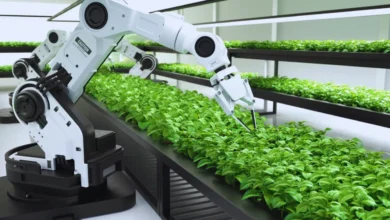
Best Dairy Technology: Revolutionizing Dairy Practices in 2025
dairy technology, Unparalleled advancements in dairy technologies have brought only changes to the dairy business over the years. Any sector of dairy farming is being revolutionized beyond cow well-being and health to produce and provide milk more effectively. With the assistance of advanced tools and techniques, dairy farmers are sure to be more productive and efficient and cater to the increasing demands for the best quality products all without causing any damage to the environment.
It is not that difficult really to envision that with the passage of time and the growth of the dairy industry, technology utilized in the processes of maintaining quality and reducing operation costs will grow as well. Automation can provide real-time monitoring systems as well as advanced data analysis to improve farmers’ decision-making regarding better resource management and animal husbandry practices. These developments advantage the farmer, business, and consumer, who enjoy ever-fresher, safer, and more economical products from the dairy sector in the future. Having the ability to enhance the industry’s well-being, dairy farming has great potential in the future as technology continues to advance.
Technological Advancements in Dairy Farming
The dairy industry has undergone tremendous change with the introduction of new innovations, which have played a significant role in synchronizing the farmer’s work with operational efficiency. The automated milking system is one of them, which allows efficient milking of milk in a continuous manner while reducing labor costs and freeing human error. All these systems also come equipped with sensors that provide real-time monitoring of cows’ health, milk production, and other important parameters. Thus, this data helps farmers make sound decisions on herd management, which delivers better health and quality in production. These innovations have also been achieved through the introduction of smart sensors, genetics and breeding technology, and feeding technology.
It is the application of smart sensors for monitoring the health of cows and detecting the early stages of diseases such as mastitis that is of critical value, enabling early intervention before the disease establishes itself. Genetic technology facilitates breeding cows for disease resistance, productivity levels, and resistance to environmental stress, and this ensures dairy farming is sustainable. Computer-controlled feeding systems give balanced, efficient nutrition, improved health, and milk production, hence improving sustainable profitability in dairy farming. All these new technologies are at the back of transforming the dairy industry to improve productivity as well as animal welfare and environmental stewardship on the basis of the new technologies.
- Smart Sensors: These sensors are used for monitoring cow health, milk production, and environmental conditions. They can detect early signs of diseases like mastitis or lameness, allowing for early intervention.
- Genetics and Breeding: Dairy farmers are increasingly using genetic technology to breed cows that are more productive, disease-resistant, and environmentally sustainable.
- Feeding Technology: Automated feeding systems ensure cows receive a balanced diet, optimizing their milk production.
| Technology | Description | Benefits |
| Automated Milking Systems | Machines that extract milk from cows automatically | Reduces labor, improves milk quality |
| Smart Sensors | Devices that monitor cow health and milk production | Provides data for better farm management |
| Genetics and Breeding | Use of genetic technology for improved cow traits | Better milk yield, disease resistance |
| Automated Feeding Systems | Machines that ensure cows receive the correct nutrition | Increased milk production, reduced waste |
Milk Processing Technologies

Milk processing has also experienced revolutionary changes due to dairy technology. New technologies in milk pasteurization, fermentation, and packaging have improved the safety, shelf-life, and quality of dairy products.
- High-Pressure Processing (HPP): HPP is a non-thermal pasteurization method that uses high pressure to kill harmful bacteria in milk without affecting the nutritional value or flavor.
- Microfiltration: This method is used to separate bacteria from milk to improve the quality and extend the shelf life of milk.
- Robotic Packaging Systems: Automated systems for packaging milk and dairy products are now common, reducing the risk of contamination and improving packaging efficiency.
The Role of Data and Artificial Intelligence in Dairy Production
Data analytics and artificial intelligence (AI) have found their way into dairy production. From tracking animal health to optimizing milk yield and feed efficiency, AI is helping farmers make informed decisions that lead to better outcomes.
- Predictive Analytics: AI algorithms can predict potential health issues in cows, milk production patterns, and optimal feeding schedules, which ultimately lead to more efficient farming operations.
- AI-Driven Farm Management Systems: These systems use data from various sources (e.g., sensors, cameras) to provide real-time that guide farming decisions, helping to improve productivity and reduce costs.
Sustainability in Dairy Production Through Technology
capacity in reality is more than ever today a subject of controversy for the dairy industry and, in parallel, technology has been used by farmers to assist with the impacts that they cause on the environment. New technologies are able to further enhance the potential of making good use of resources: minimizing waste, conserving water, and reducing greenhouse gas emissions. Technologies to minimize methane emissions, including feed additives and methane digesters, will be created for cow emissions, which have been found to be a significant contributor to climate change.
Further, energy efficiency in automatic hands-free milking equipment and processing plant facility has enabled dairy farmers to optimize the utilization of energy in terms of improved carbon footprint and sustainable agriculture. These are of great significance in placing the dairy sector in a position to attain the level of increased quantities of products needed by consumers without undermining its environmental responsibility.
| Technology | Description | Impact on Sustainability |
| Methane Reduction Systems | Feed additives or digestive aids to reduce methane | Lowers greenhouse gas emissions from cows |
| Energy-Efficient Machinery | Machines optimized for energy consumption | Reduces energy costs and carbon footprint |
| Water Recycling Systems | Technology that recycles water used in dairy farms | Minimizes water consumption and waste |
Future Trends in Dairy Technology
The dairy industry is welcomed by a plethora of new trends in dairy technology, which again have the potential to revolutionize its future. These include the pathway to the future that focuses on workplace efficiency, sustainability, and animal welfare. Meeting the challenges posed by an ever-increasing world population and demand for milk products would require high technology. Precision farming, automation, and AI-powered analytics are revolutionizing how farms are run and increasingly making dairy farming more productive and resource-efficient.
Sustainability and efficiency are becoming hot issues for the diary sector. New ideas for methane reduction, waste management, and energy efficiency will minimize environmental effects of dairy farming. Robotic milking systems and feeding automation are another set of solutions for the future which are reaching out to save labor costs and provide better cow health and high-quality milk. These technologies will revolutionize dairy farming, addressing all the environmental and consumer requirements of the future.
Precision Dairy Farming
The future of dairy farming is increasingly moving toward precision agriculture, where technology is used to optimize every aspect of dairy production. Precision dairy farming involves the use of sensors, data analytics, and automation to monitor and manage individual cows’ health, milk production, and behavior. This technology allows farmers to make more informed decisions, improving productivity and animal welfare while minimizing environmental impact.
Robotics and Automation
The integration of robotics in dairy farming is expected to increase, with automated systems for milking, feeding, and cleaning becoming more advanced. These systems reduce labor costs and improve efficiency by taking over repetitive tasks. As technology continues to improve, these robotic systems will become more intelligent, able to adapt to the needs of individual cows and ensure optimal conditions for milk production.
Artificial Intelligence and Machine Learning
Artificial intelligence (AI) and machine learning are set to revolutionize the dairy industry by providing into cow behavior, health, and production patterns. These technologies will enable farmers to predict potential health issues, optimize feed and nutrition, and track cow performance in real-time. By analyzing large datasets, AI will help create more accurate models for improving farm management and operational efficiency.
Sustainable Packaging and Waste Reduction
Sustainability in dairy technology will also extend beyond farming practices. Companies are increasingly focusing on reducing packaging waste and using recyclable or biodegradable materials for dairy product packaging. In addition, advancements in waste management technology, such as converting manure into renewable energy or fertilizers, will help further reduce the environmental impact of dairy production.
Blockchain for Supply Chain Transparency
Blockchain technology is expected to play a significant role in the dairy industry by providing greater transparency and traceability in the supply chain. By securely recording data related to the sourcing, production, and distribution of dairy products, blockchain can ensure higher levels of food safety, reduce fraud, and improve trust between producers, retailers, and consumers.
Enhanced Animal Health Monitoring
In the future, more sophisticated health monitoring systems will be implemented to track every aspect of a cow’s health. Wearables and sensors will continuously monitor vital signs, movement, and behavior, allowing farmers to detect potential issues before they become serious. This proactive approach to animal health will improve overall farm productivity and reduce the need for antibiotics, fostering a healthier and more sustainable herd.
Impact on Dairy Farmers and the Economy
Advances in dairy technology will have a heavy impact on the profitability and dairy farms as well as improve the operation of the farm. Autonomous technologies such as robotic milking machines and smart sensors will make it possible to have fewer employees but at the same time more efficient in its operations so that a farmer is being compensated for the right fuller productivity but less cost. These technologies, apart from making the daily operations of farming easier, also enable easier monitoring and tracking of the health of cows. This then leads to increased productivity with healthier cows. The overall outcome will be increased milk yield and quality translating to better revenue generation.
These technological innovations also benefit the general economy overall because they place dairy farming in a much more sustainable and lucrative future. With every step, dairy farming becomes more efficient and goes global without being too expensive, indeed at the cost of less energy. The best methods would allow highly efficient farmers to meet rising world demand without production going to a level that would harm the environment. The maximization of resources and efficient practices will also enable dairy farmers to be profitable and provide them with a green image.
Wrapping Up
This is a fresh innovation in the world of dairy technology, which has literally transformed the already productive, environmentally friendly, and quality-focused industry. Health monitoring, modes of production, and milk transportation logistics are revolutionizing the path of dairy farms, allowing farmers to meet the increasing demands with a reduced environmental impact and enhanced productivity. These developments are not only maximizing operational efficiency but also improving animal well-being and product quality that is resorted to for the production of dairy products in a more resilient and responsive industry.
The government also protects interests in such guaranteed developments, presenting evidence of how greater use of these technologies will render the dairy industry future-fit against all possibilities. Therefore, a very bright future is awaiting the dairy industry. Ongoing technological upgradation will ensure that the dairy industry is the most sophisticated to tackle challenges in the future with international competitiveness to offer sustainable and high-quality products to consumers. In fact, as the technology for dairy keeps evolving, the future shall even turn increasingly productive, eco-friendly, and innovative for the dairy farming ecosystem, paving the way for greener and healthier ways of developing that industry.
FAQ
What is dairy technology?
Dairy technology refers to the application of various technological advancements in the dairy industry to improve milk production, processing, and distribution. It includes innovations such as automated milking systems, genetic breeding, smart sensors, and AI-driven data analytics.
How has technology improved milk production?
Technology has improved milk production by automating milking systems, optimizing feeding schedules, and using data analytics to monitor cow health and production. These advancements reduce labor costs, improve milk quality, and increase efficiency in the dairy industry.
What are the benefits of automated milking systems?
Automated milking systems increase milking efficiency, reduce labor costs, and improve milk quality. They also allow for real-time monitoring of cow health and milk production, providing valuable data to farmers for better decision-making.
How does AI contribute to dairy farming?
AI contributes to dairy farming by analyzing data from sensors, cameras, and farm management systems to predict health issues, optimize milk yield, and improve feed efficiency. This leads to more productive, sustainable, and cost-effective dairy farming operations.
What is the role of blockchain in dairy technology?
Blockchain technology is being explored to improve traceability in the dairy supply chain. It helps ensure the safety and transparency of dairy products, from farm to table, by recording every transaction and movement of goods on a secure digital ledger.
How does technology help reduce the environmental impact of dairy farming?
Technology helps reduce the environmental impact of dairy farming through methane reduction systems, energy-efficient machinery, and water recycling technologies. These innovations minimize waste, conserve water, and reduce greenhouse gas emissions.
What are the challenges of adopting dairy technology?
The main challenges include the high cost of technology, the need for training and technical expertise, and limited access to resources, particularly in rural or developing regions. These barriers can slow down the widespread adoption of advanced dairy technologies.





